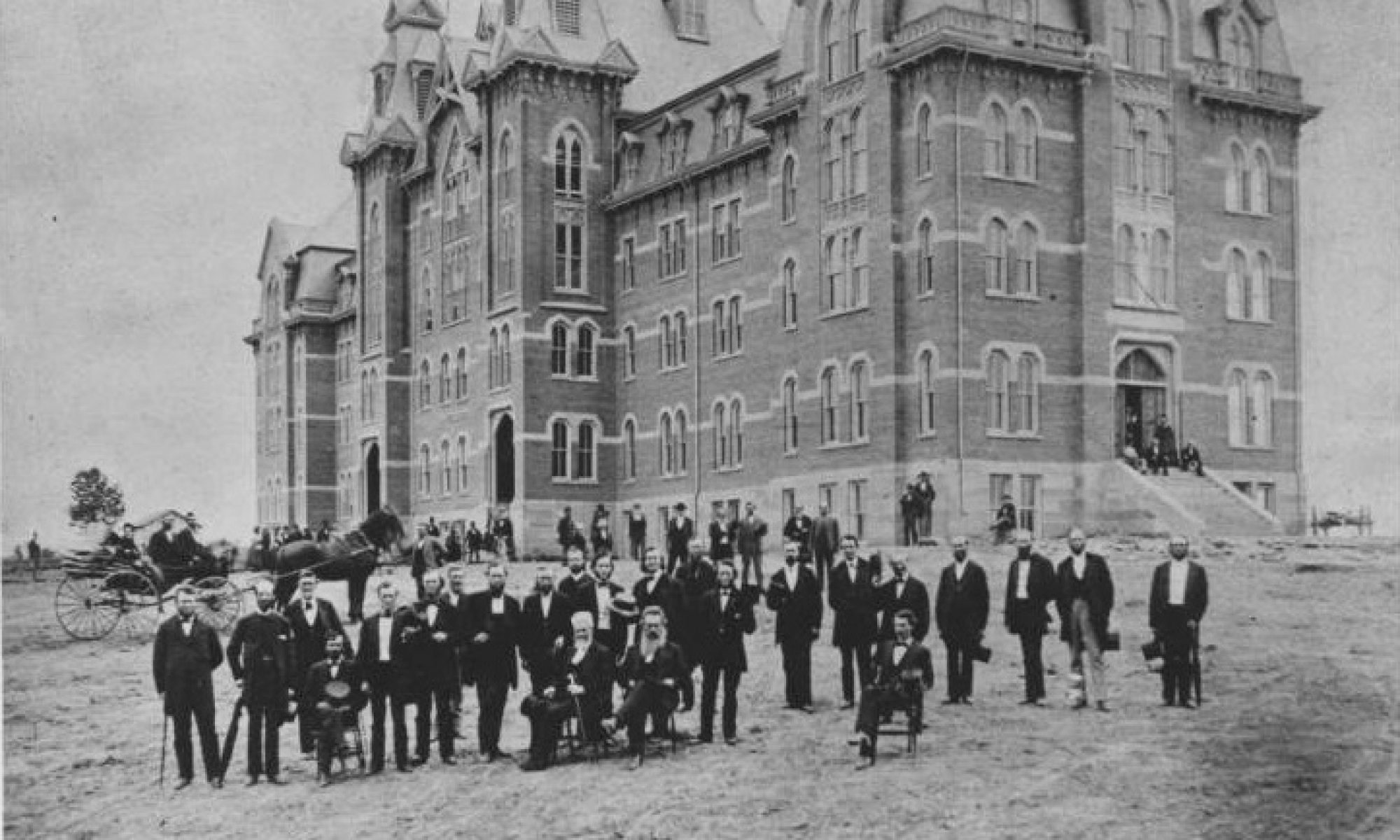Introduction | Buchtel Hall Takeover | Anti-Apartheid Protests | Protests for Equality | Conclusion
Anti-Apartheid Protests
University of Akron students and community members have historically used their voices to speak out against injustice and oppression locally, nationally, and globally. One such instance was holding anti-Apartheid protests on campus in October of 1985. The protests were one of many that occurred in the United States and across the globe at that time and were considered one of the most influential global social movements of the twentieth century. National and international voices called for divestment from South Africa and the dismantling of Apartheid, a system of institutionalized racial segregation that existed in South Africa and West South Africa (now Namibia) from 1948 until the early 1990s. Apartheid was characterized by an authoritarian political culture based on white supremacy, which ensured that South Africa was dominated politically, socially, and economically by the nation’s minority white population, while black Africans had the lowest social status. The ending of Apartheid was a lengthy and extensive process which concluded formally on April 27, 1994, although the economic legacy and social effects of Apartheid continue to the present day. The images and articles below from Archival Services of University Libraries recount this struggle that occurred over three decades ago, and the changes that occurred on campus as a result of these rallies.
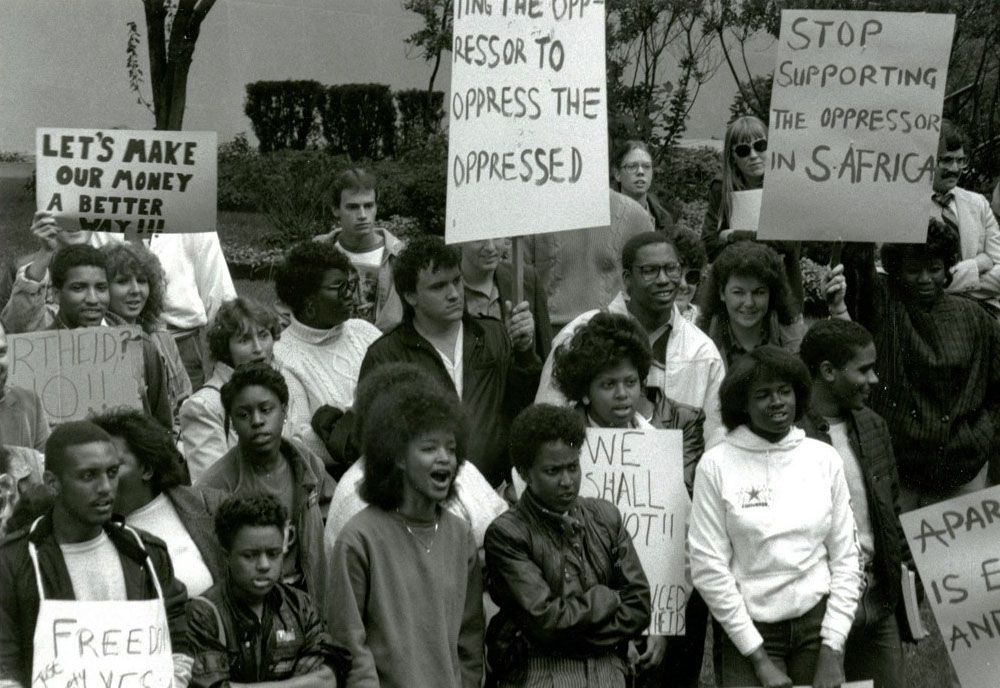
From the Tel-Buch Office Records in Archival Services of University Libraries
A group of anti-Apartheid protestors with protest signs rally on main campus, probably on Buchtel Common or in front of Buchtel Hall. during one of the anti-Apartheid protests that occurred at UA in October 1985. As several of the signs show, one of their objectives was to persuade the University to stop investing in companies in South Africa. The protests were organized by Black United Students (BUS), Associated Student Government (ASG), and the South Afrikan Coalition of Akron. It was one of hundreds held across the country on October 11th, mostly on college campuses.
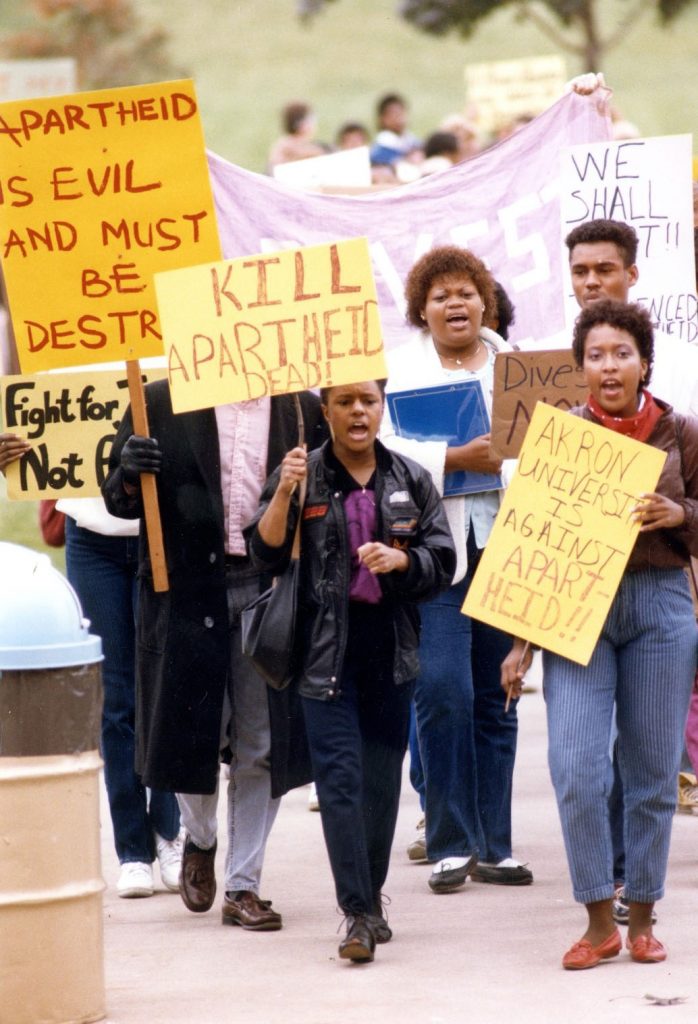
From the Tel-Buch Office Records in Archival Services of University Libraries
A group of anti-Apartheid protestors hold protest signs and march through The University of Akron campus in October 1985. As the Buchtelite reported, “anti-Apartheid activism reaffirmed its status as the dominant college protest issue of 1985 with a string of nationally-coordinated demonstrations on campuses across the country.”

From the Tel-Buch Office Records in Archival Services of University Libraries
One of the leaders of the anti-Apartheid protest at UA speaks to a crowd of protestors holding signs during one of the demonstrations that occurred at UA in October 1985. The crowd stands on campus near what appears to be Buchtel Avenue between Bierce Library and Olin Hall. One of the signs reads “Divest from South Africa.” An estimated 75 to 100 students and faculty participated in the march, almost twice as many as those that protested at Berkeley and Harvard that day.
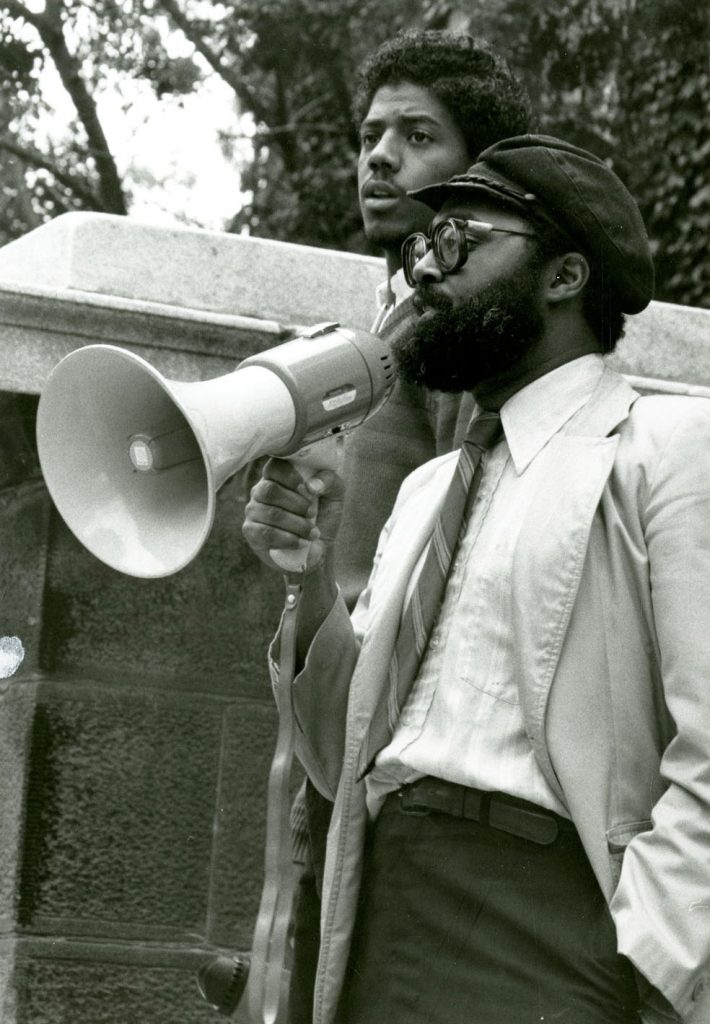
From the Tel-Buch Office Records in Archival Services of University Libraries
One of the leaders of the anti-Apartheid protest at UA stands on the steps of Buchtel Hall and speaks to a crowd of protestors using a megaphone during one of the anti-Apartheid protests that occurred at UA in October 1985. A Black student, probably a member of Black United Students (BUS), can be seen behind him.
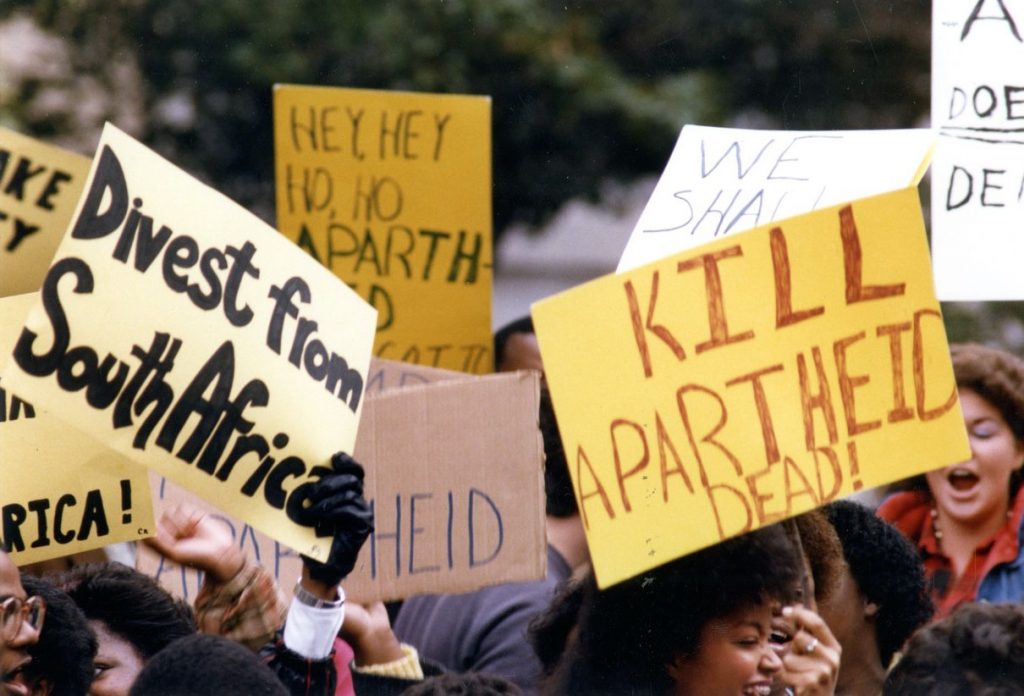
From the Tel-Buch Office Records in Archival Services of University Libraries
A group of protestors on Buchtel Common at UA hold protests signs during one of the anti-Apartheid protests that occurred at UA in October 1985. This protest coincided with the nationwide protest effort and took place during UA’s Homecoming celebration. The demonstrations were covered in the local newspapers and on local television, including Akron station WAKR-TV.
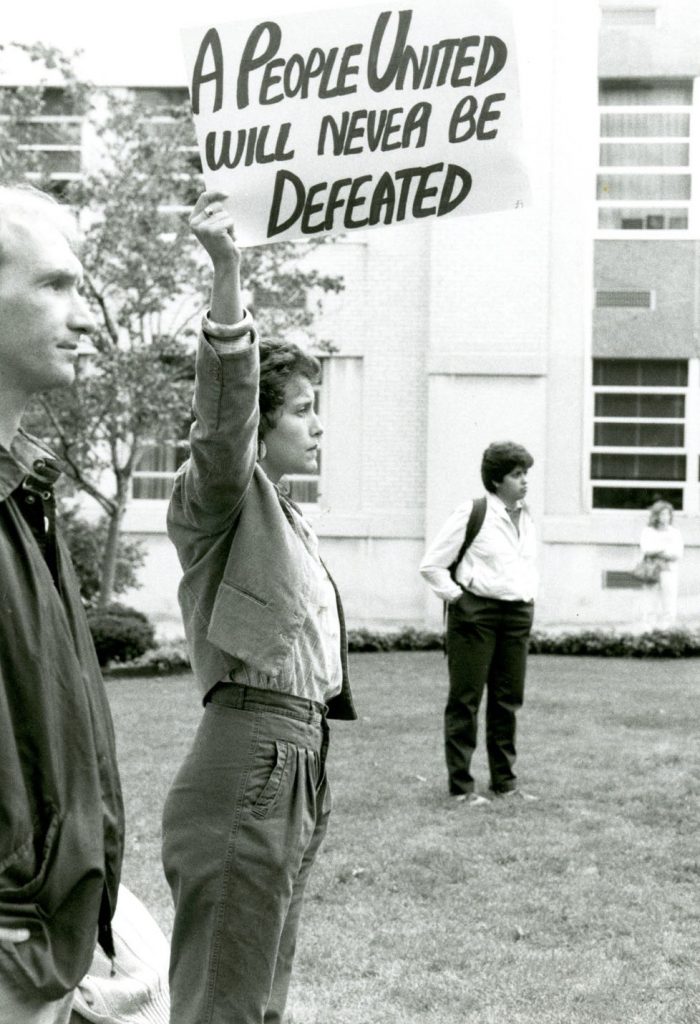
From the Tel-Buch Office Records in Archival Services of University Libraries
A faculty member holds a protest sign during one of the anti-Apartheid protests that occurred at UA in October 1985. One of the objectives of the protestors was to make students aware of the issue.
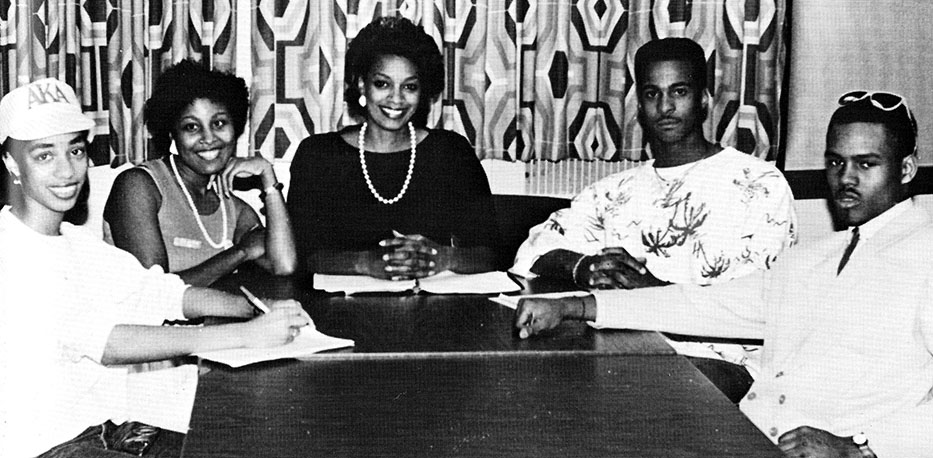
From the Tel-Buch Collection in Archival Services of University Libraries
As part of the protests, the Black Greek Council, seen in this photograph from the Tel-Buch, refused to play President Bill Muse’s softball team called Muse’s Marauders at the annual Homecoming softball game. This was just one way Black students got their point across about their opposition to University investments in South African businesses that supported Apartheid.

From the Buchtelite Collection in Archival Services of University Libraries
This article from the Buchtelite recounts the anti-Apartheid protest that took place on The University of Akron campus on October 11, 1985. According to one of the organizers, the protest was very successful because it educated the students about Apartheid and brought the issue to the attention of the Board of Trustees. As seen here, it also elicited a response from University President Bill Muse, who stated that the board would review their policy at the next board meeting.
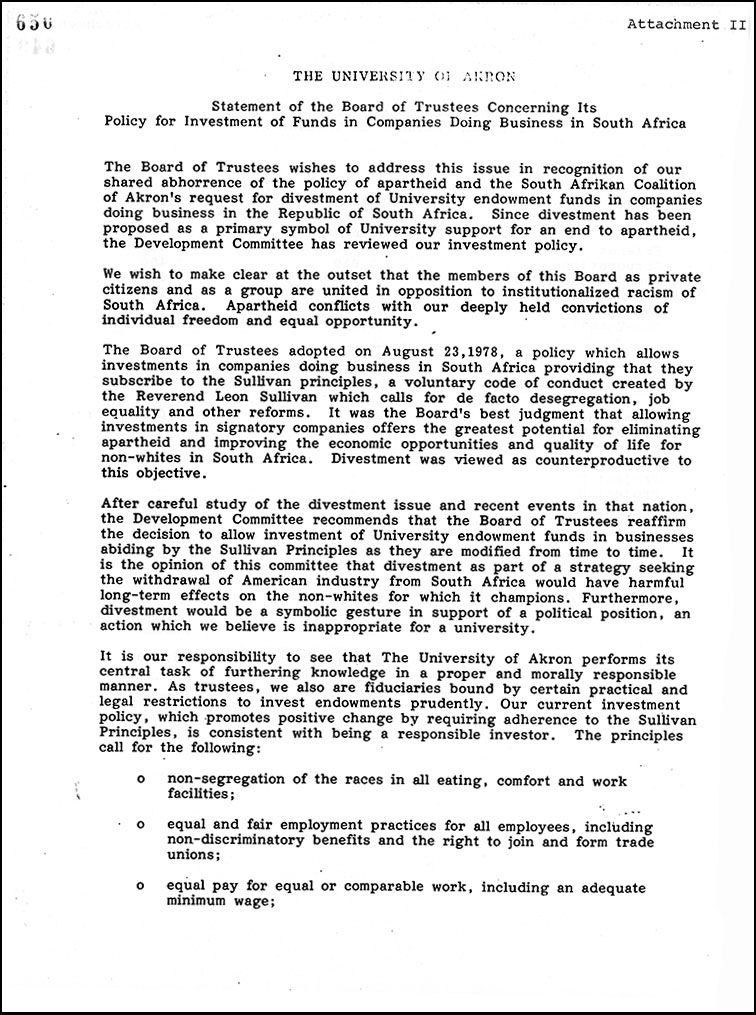
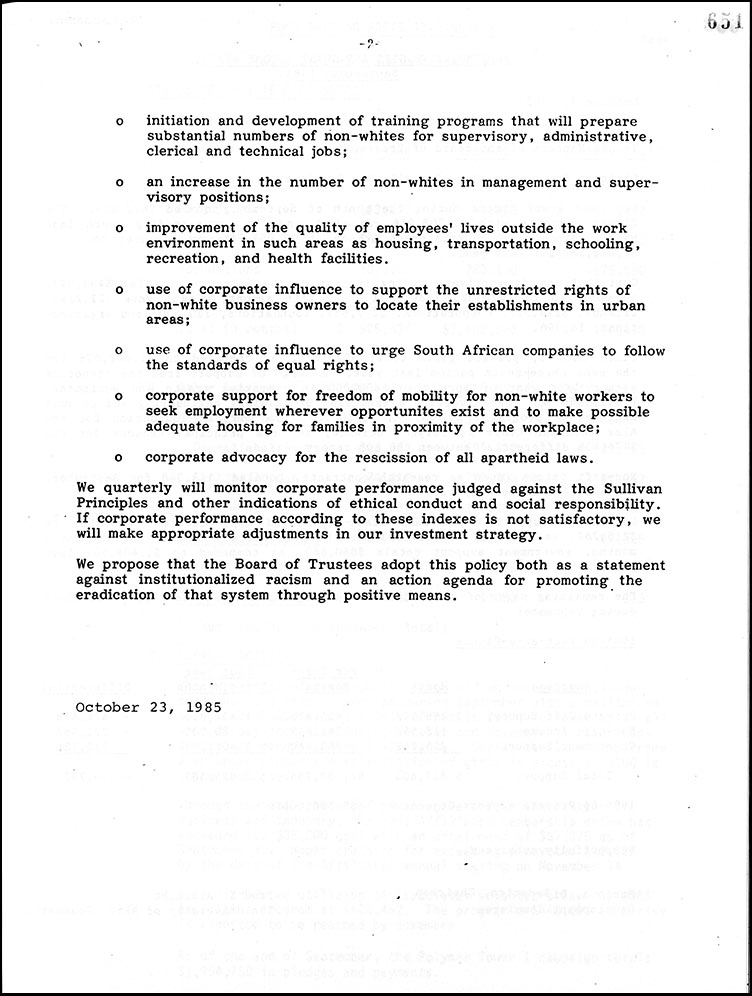
From the Board of Trustees Records in Archival Services of University Libraries
This statement on Apartheid appeared in the October Board of Trustees meeting minutes. It states that the University abhors the policy of Apartheid in South Africa and would consider requests from the protestors to divest of University endowment funds in companies doing business in South Africa. The statement says that the board decided it would only invest endowment funds in companies doing business in South Africa that adhere to the Sullivan Principles, a voluntary code of conduct developed in 1978 by Reverend Leon Sullivan that calls for de facto desegregation, job equality, and other reforms.
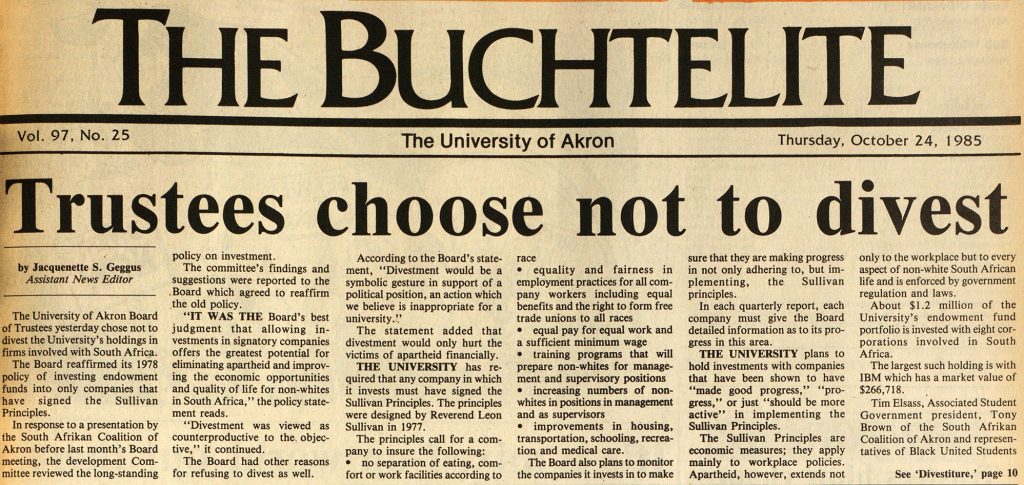
From the Buchtelite Collection in Archival Services of University Libraries
This article in the Buchtelite appeared the day after the October 23 Board of Trustees meeting with the headline “Trustees choose not to divest,” but to reaffirm its position from 1978 that it would only invest in companies in South Africa adhering to the Sullivan Principles. This, as well as the statement that “divestment would be a symbolic gesture in support of political policies, an action which we believe is inappropriate for a university,” drew further criticism.
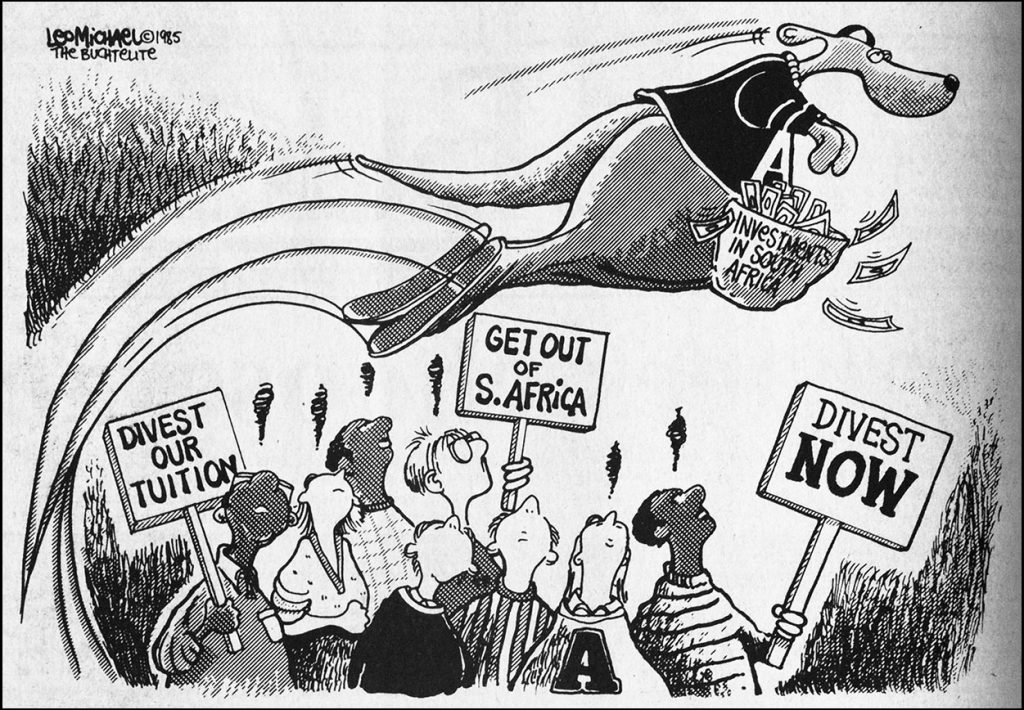
From the Buchtelite Collection in Archival Services of University Libraries
This political cartoon by Leo Michael appeared in the October 24, 1985 issue of the Buchtelite the day after the Board of Trustees voted not to divest in companies doing business in South Africa. It shows the college mascot, Zippy, with her pouch full of money (presumably tuition dollars) hopping over a crowd of demonstrators holding protest signs.
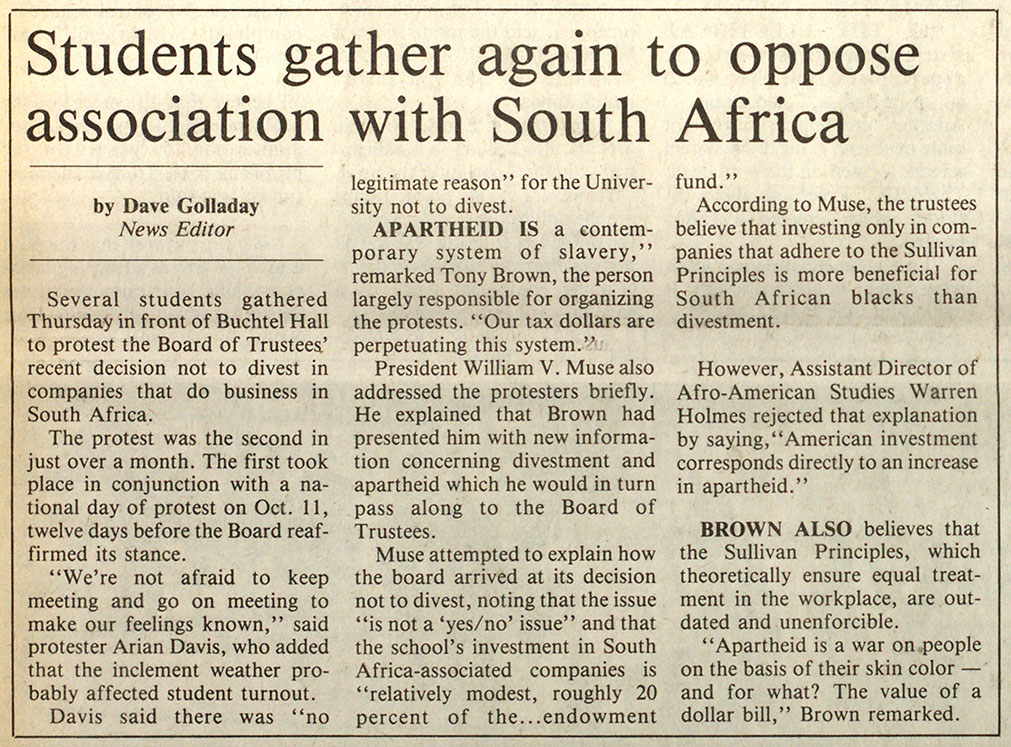
From the Buchtelite Collection in Archival Services of University Libraries
The board’s decision to only invest in companies in South Africa adhering to the Sullivan Principles led to further protests on the campus, as evidenced by this Buchtelite article. During this protest President Muse met with the protestors and obtained additional information regarding divestment that he passed along to the board.

From the Tel-Buch Collection in Archival Services of University Libraries UA’s
Black United Students (BUS), whose executive officers are seen in this photograph from the Tel-Buch, helped organize the protests on campus against Apartheid in October 1985. BUS was formed at UA in the late 1960s and was officially recognized as a student organization in 1969, the year of the Buchtel Hall Takeover. BUS has a tradition of organizing rallies on campus that fought oppression and advocated for civil rights and equality on campus and around the world.
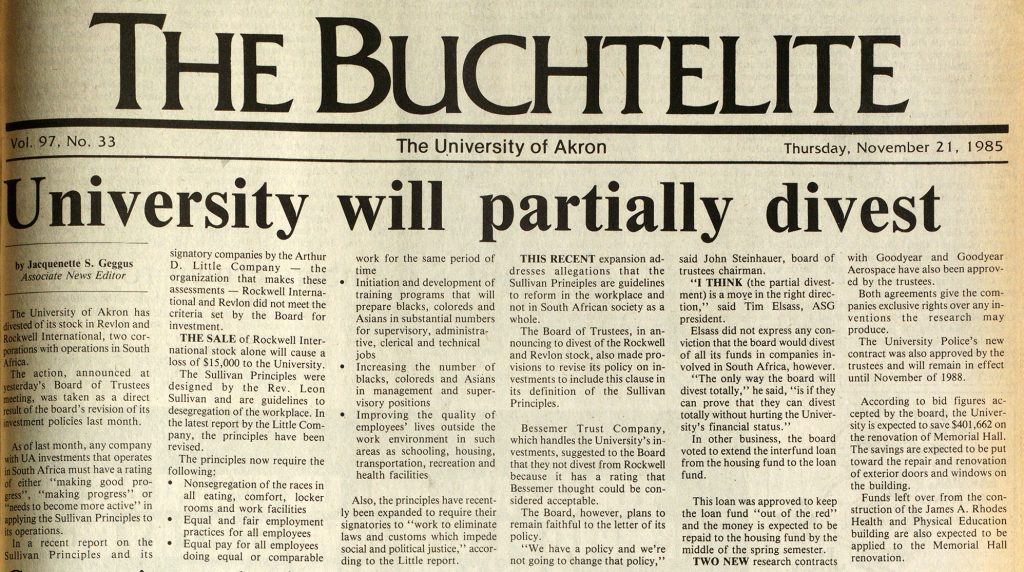
From the Buchtelite Collection in Archival Services of University Libraries
During the November 1985 Board of Trustees meeting, the board decided to partially divest in companies doing business in South Africa that did not meet their criteria, as reported in this Buchtelite article from mid November. This included companies that did not adhere to or were not making progress toward the Sullivan Principles.
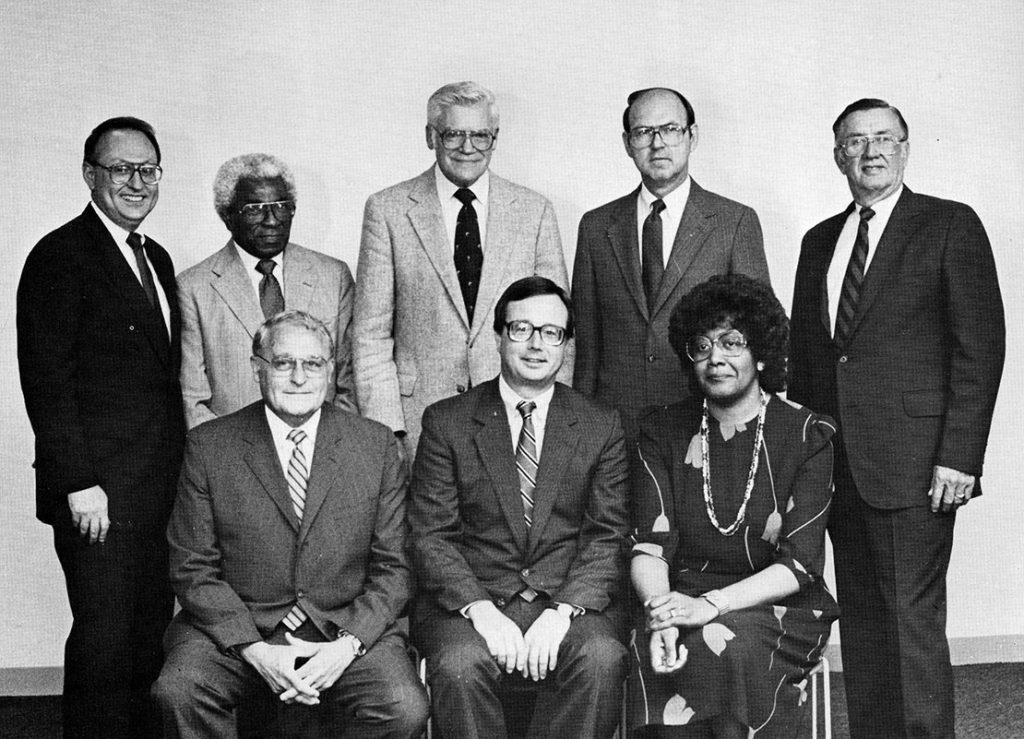
From the Tel-Buch Collection in Archival Services of University Libraries
The University of Akron Board of Trustees, seen in this photograph from the 1985 Tel-Buch, elected two Black members the year this photograph was taken. This includes Dr. Melvin Farris (back row, second from left) and Janet Parnell (front row, third from the left). It was Farris and Parnell who advocated for the University’s divestment of businesses in South Africa and who proposed the board resolution to divest in those companies that did not adhere to the Sullivan Principles.
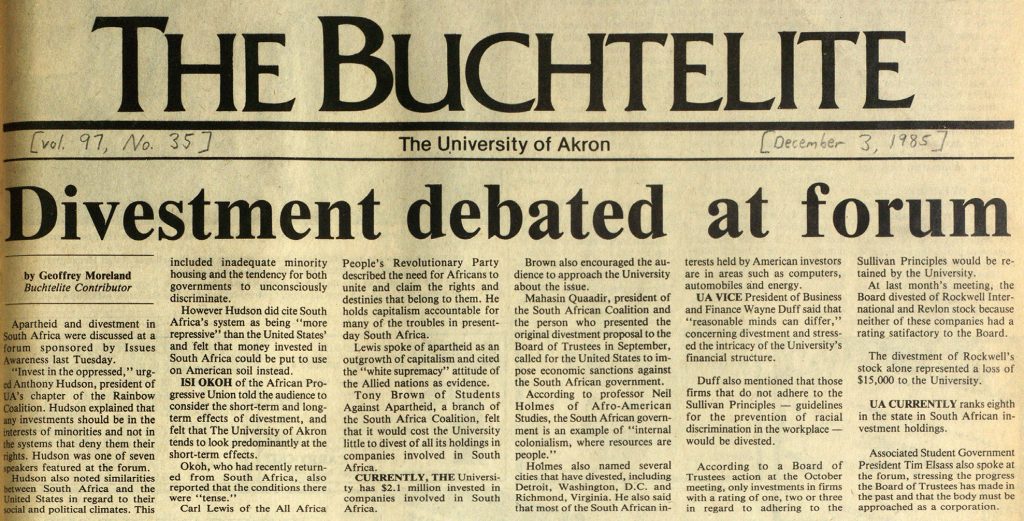
From the Buchtelite Collection in Archival Services of University Libraries
In early December 1985, a forum was held on Apartheid and divestment in companies doing business in South Africa. Participants represented a broad range of organizations including Associated Student Government, UA’s chapter of the Rainbow Coalition, the African Progressive Union, the All African People’s Revolutionary Party, and Students Against Apartheid, a branch of the South Africa Coalition.
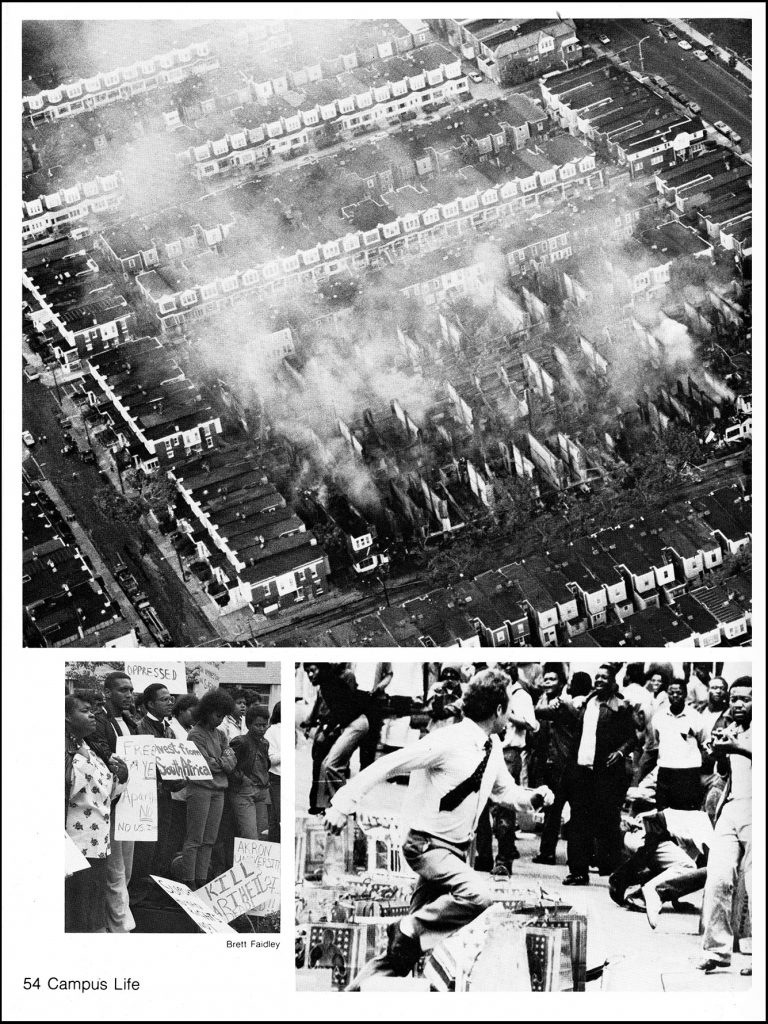
From the Tel-Buch Collection in Archival Services of University Libraries
This page from the World Events section of the 1985 Tel-Buch features images of Apartheid in South Africa and the anti-Apartheid protests that took place on campus that year. The image on the bottom right shows a white man running from Black South Africans protesting Apartheid in Johannesburg, South Africa, while the image on the lower left shows students half way around the world at The University of Akron at an anti-Apartheid protest on the campus.
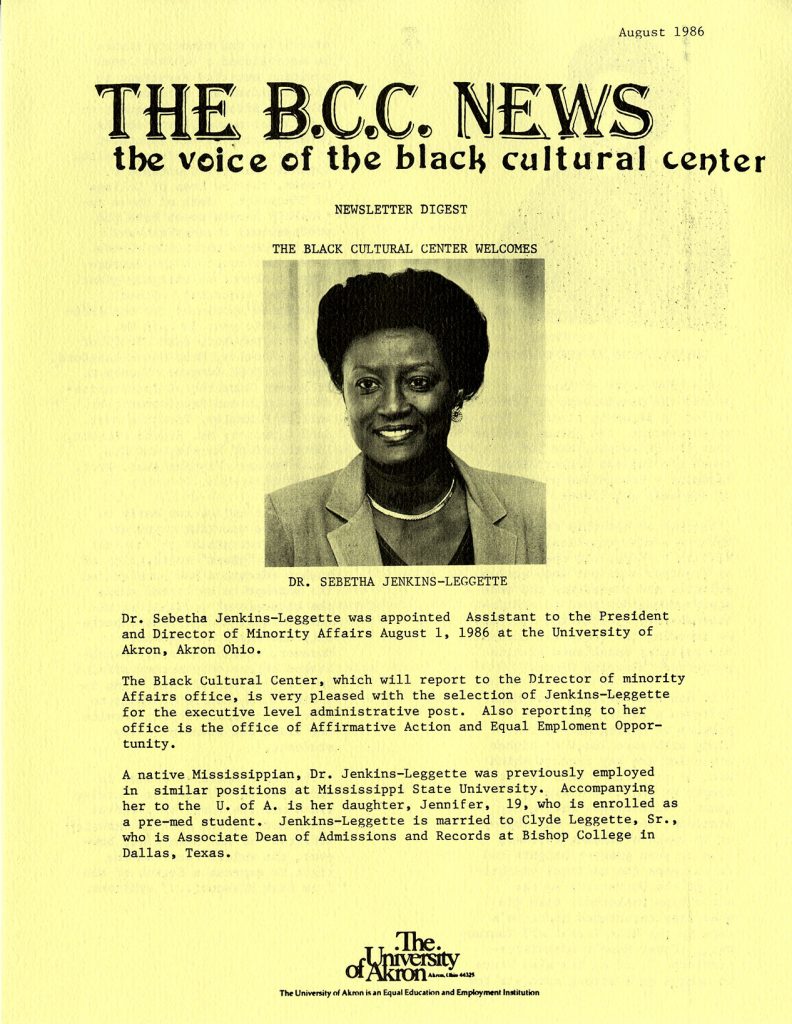
From the Black Cultural Center Records in Archival Services of University Libraries
During the mid 1980s when the anti-Apartheid protests took place on the campus and throughout the world, President Muse and his administration were undertaking many initiatives to provide equal opportunities for Blacks on campus. This included increasing enrollment of Black students and hiring additional Black faculty and staff, including Dr. Sebetha Jenkins-Leggette, who became the first Special Assistant to the President and Director of Minority Affairs, as announced on the front page of this BCC newsletter.
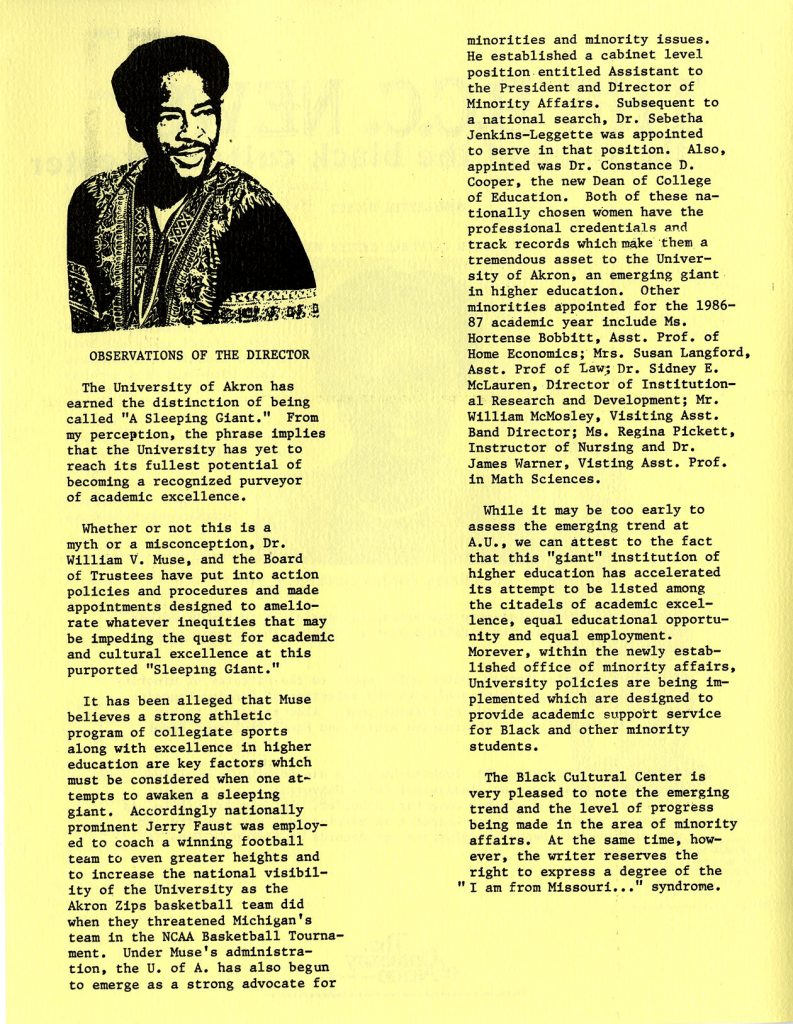
From the Black Cultural Center Records in Archival Services of University Libraries
This BCC newsletter from 1986 includes a statement from the director of the Black Cultural Center praising President Muse and the University’s Board of Trustees for implementing policies and procedures and making appointments to “ameliorate inequities that may be impeding the quest for academic and cultural excellence” at the University and for being a “strong advocate for minorities and minority issues.”
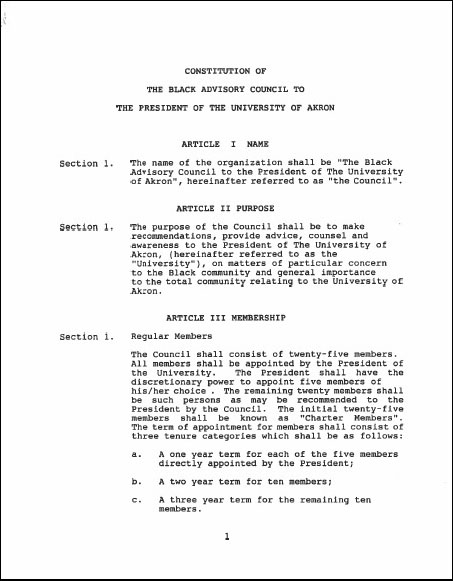
From the Black Cultural Center Records in Archival Services of University Libraries
Six years after the anti-Apartheid protests, President Muse created the Black Advisory Council to the President of The University of Akron. Their constitution, seen here, outlines its purpose, which was to “make recommendations and provide advice, counsel, and awareness to the President of The University of Akron on matters of particular concern to the Black community.”

